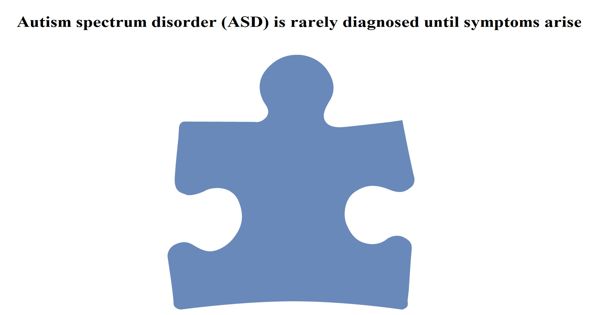Autism spectrum disorder (ASD) is rarely diagnosed until symptoms arise
Signatures in brain function in children will predict signs of autism at 18 months of age. Autism Spectrum Disorder (ASD) is rarely diagnosed before signs emerge, often long into infancy. In infants who were later diagnosed with ASD, researchers observed a reduction in connectivity between the frontal brain regions. Proof, however, suggests that developmental defects are expected to appear in the brain well before that: early detection of children at risk of ASD could allow for therapies that would enhance their developmental outcomes. Infants also displayed enhanced communication across temporoparietal areas in the right hemisphere, which were correlated with the transmission of social knowledge.
In infants who later received a diagnosis of Autism spectrum disorder (ASD), researchers noted decreased connectivity between frontal brain regions.
Researchers at the University of California, Los Angeles, find signs of characteristic brain activation in babies that expected ASD symptoms at 18 months of age. The work, led by Shafali Jeste, MD, at UCLA, is published in Biological Psychiatry: Cognitive Neuroscience and Neuroimaging, published by Elsevier.
“Early identification and intervention is key to getting better outcomes for children with neurodevelopmental disorders,” said Cameron Carter, MD, Author of Biological Psychiatry: Cognitive Neuroscience and Neuroimaging. “This study suggests that relatively low-cost diagnostic tools such as EEG may, in the not-too-distant future, help us to do a better job by identifying atypical brain development in infancy when interventions may be even more impactful than when offered to toddlers and young children.”
Researchers used electroencephalography (EEG), a non-invasive method used to calculate electrical brain activity from outside the head and to monitor neuronal activity in the so-called alpha zone. Alpha-range activation is correlated with long-range brain interactions. The group then used a method that helped it to incorporate data from across the brain.
First author Abigail Dickinson, Ph.D., said One crucial aspect of brain development is the change in patterns of brain activity. We wanted to know if measures of neural activity could detect atypical brain development in ASD during early infancy.”
Dr. Dickinson and the team conducted EEG measurements in 65 3-month-old infants; 29 at low family risk of ASD and 36 at high risk, with elderly siblings, affected. When the children were 18-month-old, the ASD was evaluated by a professional clinician.
Researchers used computer simulation to forecast symptom effects at 18 months based on child neural function. The model’s findings were consistent with the actual signs measured in babies. The model was unable to predict verbal or non-verbal cognitive scores in infants—suggesting that the brain communication pattern may be a particular ASD marker.
In children with elevated ASD signs, studies have seen reduced communication between the frontal regions. Infants have exhibited enhanced interactions around the temporal-parietal areas of the right hemisphere, which are related to the transmission of social information.
“These findings improve our understanding of the neural differences that precede autism and show which brain regions reveal the earliest signs of disruption,” Dr. Dickinson said. The findings bolster the idea that disrupted brain connectivity is a root cause of ASD, not a consequence.
The authors propose that low cost, large use, and low risk of EEG make it a successful screening method to classify children at higher risk of developing ASD or those with “borderline” symptoms so that they get early intervention. “Mapping patterns of activity associated with autism could ultimately help identify infants who show early signs of neural risk,” said Dr. Dickinson.















